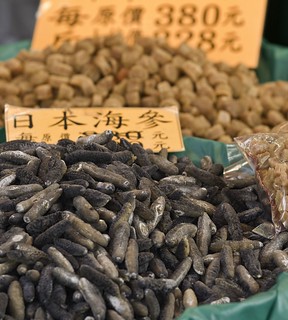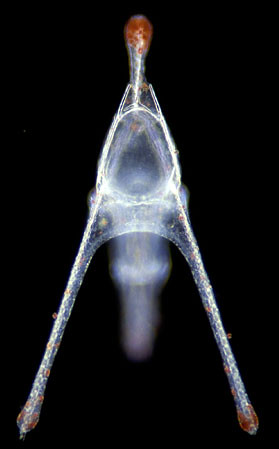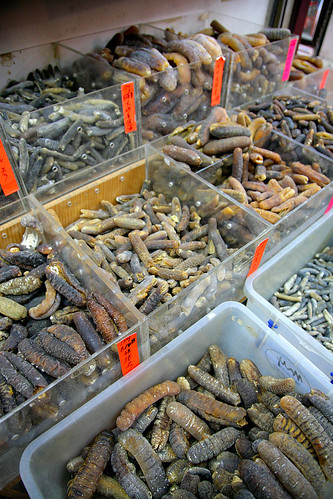me: ...and THAT is why echinoderms are cool!
other: So?
me: What do you mean?
other: What good are they? Why should I care? How do people use them?
Between this fun little exchange and it bein' the summer grant for writing NSF grants, the whole notion of importance has been a lot on my mind. The answer to the question above, obviously is A LOT.
But for good or bad, echinoderms do not evoke the same need for study that say, various pesty mammals or scavenging, nocturnal insects seem to generate. They do not attack people with rabies nor do echinoderms reside in your sink waiting for your dinner to go bad.
So, aside from their intrinsic interest, what makes echinoderms "worth" studying in the professional world?
1. Ecology
 Far and away the most important reason. A great many near-shore echinoderms have demonstrated critical roles in marine ecosystems. Echinoderms occupy critical roles in those systems, without them those ecosystems would be radically altered. Potentially with very deleterious affects on human systems. Examples:
Far and away the most important reason. A great many near-shore echinoderms have demonstrated critical roles in marine ecosystems. Echinoderms occupy critical roles in those systems, without them those ecosystems would be radically altered. Potentially with very deleterious affects on human systems. Examples:
- Pisaster ochraceus-keystone species in intertidal ecosystems-feeding on and interacting with mollusks of various types.
- Asterias amurensis. Introduced from the North Pacific to Southern Australia, where it is currently running amok and apparently wreaking havok with Australian shellfish.
- Strongylocentrotus and/or Diadema. Purple sea urchins in kelp forests or Black needle urchins in coral reefs. Remove them or increase their numbers and the balance of food is lost.
- Acanthaster planci. I've written about these earlier. But the short version? They eat coral. A LOT of it.
 (from New Scientist)
(from New Scientist)
- Biomass. Echinoderms are also probably very important in deep-sea and other cold-water ecosystems. But that role remains poorly studied. The presence of deep-sea echinoderms: sea cucumbers, ophiuroids, etc. is substantial and can constitute a majority (up to 90%) of the TOTAL deep-sea biomass. You don't see them, but by the pound, there's a LOT of them spread out on the ocean floor!
- Plus, they process the benthic biomatter like giant deep-sea earthworms. apparently quite a bit of it.
 |
| Image by Paul Lamble |
These fossils correlate with occurrence for specific types of organisms in the fossil record and are usually common enough that they can be found readily and make immediate identifiers for the age/layer you are attempting to identify.
MANY echinoderms find their way towards use in this fashion: sea urchins (including sand dollars, sea biscuits, and "regular" sea urchins), crinoids, blastoids, and even asteroid ossicles can be useful at specific horizons. Fossils can also be used to help reconstruct the paleoecology of a specific area.
Some could only have lived in unconsolidated sandy bottoms. Others only on hard bottoms. Paleozoic fossils can be surprisingly data rich.
3. Food Its always weird for me to think that ANY echinoderms are eaten as food.
But there they are.
Really, only two groups of echinoderms have ANY kind of real market.
To my knowledge, people don't eat crinoids or ophiuroids and only marginally devour asteroids...
Sea Cucumbers. aka trepang, gamat, or beche-de-mer. Eaten throughout Asia and believed by some to have various medicinal qualities, including tissue repair (some support) and as an aphrodesiac (not well supported).
Holothurians from several different regions, including Alaska, British Columbia, Australia, Madagascar and areas throughout the Indo-Pacific tropics are supported. An update can be found here. Sea cucumber fishery politics can be very contentious. and sustainability of the fishery remains a hot button issue with several species perceived as potentially endangered from overfishing.
 |
| Image by Wyld Ginger |
 |
| Image by Photobat |
Sea Urchins. Sea urchin gonads are eaten by the Japanese and now throughout the world. Several taxa, including Strongylocentrotus, are sought out for their tasty innards... Sea urchin fisheries appear to have organization. The North Pacific Strongylocentrotus is represented by the Pacific Urchin Harvesters Association.

Although nearly all of the classes have been studied in minor ways , three conspicuous taxa have emerged at the forefront.
The Purple Sea Urchin-Strongylocentrotus purpuratus.
By far one of the MOST heavily studied echinoderms in the world. A search on Google Scholar revealed 8,730 hits for "Strongylocentrotus" and "development" with only some 2,740 hits for "Strongylocentrotus" and "genetics". All that plus a recent issue of Science from 2006 which announced the 814 megabase genome of the purple sea urchin (Strongylocentrotus purpuratus). Honestly, how many single echinoderm SPECIES get a whole FRAKKIN' issue of Science devoted to them?????
 The Asterinidae (Cl. Asteroidea)-particularly Asterina miniata. This odd little group of starfish occurs quite commonly in several nearshore and easily collected habitats. That, plus the keen developmental patterns observed have made several bat star species VERY heavily studied.
The Asterinidae (Cl. Asteroidea)-particularly Asterina miniata. This odd little group of starfish occurs quite commonly in several nearshore and easily collected habitats. That, plus the keen developmental patterns observed have made several bat star species VERY heavily studied.When last I checked Google Scholar..some 1850 citations were recorded from JUST "Asterina" (in part a synonym of Patiria) and "development" and some 940 for "Patiria" and "development" with only some 524 for "Asterina" and "genetics". If the "development" hits are combined, that makes some 2790 total.





5 comments:
Thanks, as always, for the informative post. I come for the terms like FRAKKIN, but I stay for the echino knowledge.
Excellent blog Dr. Mah! and I was going to make a comment about the battlestar gallactica reference, but jives beat me to it...
p.s. Odontaster validus has also been suggested to be a keystone species in the Antarctic!
Ha!
Wait until you see my Echinoblog comparing echinoderms with BSG spaceships! (am I kidding or not?)
hi, im doing an assignment on this phylum, and this info really helped, I sincerely thank you
Post a Comment